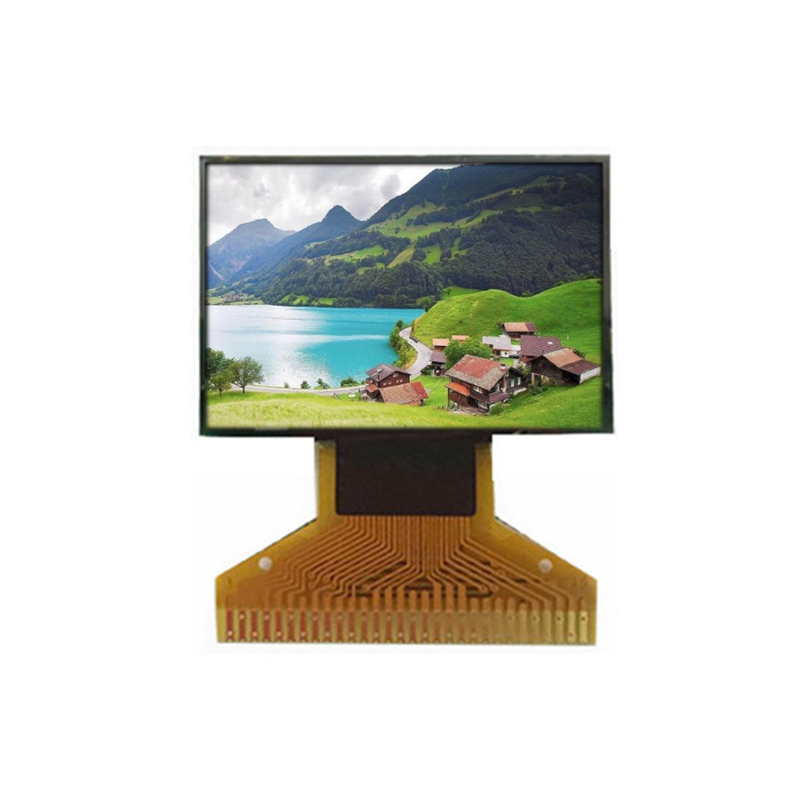In the ever-evolving world of display technology, two prominent contenders vie for supremacy: PM OLED (Passive Matrix Organic Light Emitting Diode) and AM OLED (Active Matrix Organic Light Emitting Diode) displays. Both technologies have their own merits and applications, but in the quest for superior visual experiences, it's crucial to understand their differences and capabilities. In this comprehensive guide, we delve deep into the realm of OLED displays, comparing and contrasting PM OLED and AM OLED to help you make informed decisions for your display-related needs.

Before we plunge into the details of PM OLED and AM OLED displays, let's take a moment to appreciate the foundation of this revolutionary technology.
OLED, or Organic Light Emitting Diode, is a cutting-edge display technology that utilizes organic compounds to emit light when an electric current is applied. Unlike traditional LCD displays that rely on a backlight, OLEDs are self-emissive, which means each pixel emits its own light. This fundamental difference has paved the way for innovations in display quality, efficiency, and design.
PM OLED displays employ a passive matrix addressing scheme to control individual pixels. This technique involves selecting rows and columns sequentially to activate pixels. While PM OLEDs have been around for some time, they are still a noteworthy player in the display arena.
Energy Efficiency: PM OLED displays are renowned for their energy efficiency. Each pixel consumes power only when it's active, resulting in significant energy savings, making them ideal for portable devices.
Cost-Effective: These displays are relatively more cost-effective to produce, which can translate into more affordable products for consumers.
Limited Response Time: PM OLEDs may exhibit slower response times compared to AM OLEDs, which can affect fast-moving content, but for most applications, this difference is imperceptible.
AM OLED displays on the other hand, implement an active matrix addressing scheme that controls each pixel individually through thin-film transistors (TFTs). This technology is commonly found in high-end displays, such as smartphones and OLED TVs.
Exceptional Contrast: AM OLEDs boast remarkable contrast ratios, delivering true black levels and vibrant colors. This results in stunning visual experiences with unparalleled depth and realism.
Swift Response Time: Thanks to the active matrix design, AM OLEDs offer rapid response times, making them ideal for fast-paced content like gaming and video streaming.
Uniform Brightness: These displays ensure uniform brightness across the entire screen, eliminating issues like backlight bleed, common in some other display technologies.
Now that we've explored the distinctive characteristics of PM OLED and AM OLED displays, the question arises: which one should you choose?
PM OLEDs excel in scenarios where energy efficiency and cost-effectiveness are paramount. If you're considering a display for a portable device, such as a smartwatch or fitness tracker, PM OLED might be the ideal choice. Its modest response time won't significantly impact everyday use, and the cost savings can make your product more accessible to a wider audience.
For applications demanding uncompromising visual quality and rapid response times, AM OLED is the clear winner. Smartphones, OLED TVs, and high-end monitors benefit immensely from AM OLED technology. The exceptional contrast, vibrant colors, and uniform brightness ensure a superior viewing experience, especially for multimedia and gaming enthusiasts.
As technology marches forward, both PM OLED and AM OLED displays will continue to evolve. Manufacturers are tirelessly working to improve energy efficiency, response times, and overall performance. This relentless pursuit of excellence promises an exciting future for OLED display technology.
In conclusion, the choice between PM OLED and AM OLED displays ultimately depends on your specific needs and budget. Each technology has its own strengths, and understanding their nuances is key to making an informed decision. Whether you're designing the next-generation smartphone or simply looking for a dazzling TV display, the world of OLED technology offers a plethora of options to cater to your desires.
Previous: High Performance North Seeking MEMS Gyroscope
Next: Optimizing Heavy Truck Starter Battery Performance for Ultimate Reliability
Copyright:@2020-2021
Comments Please sign in or sign up to post.
0
0 of 500 characters used